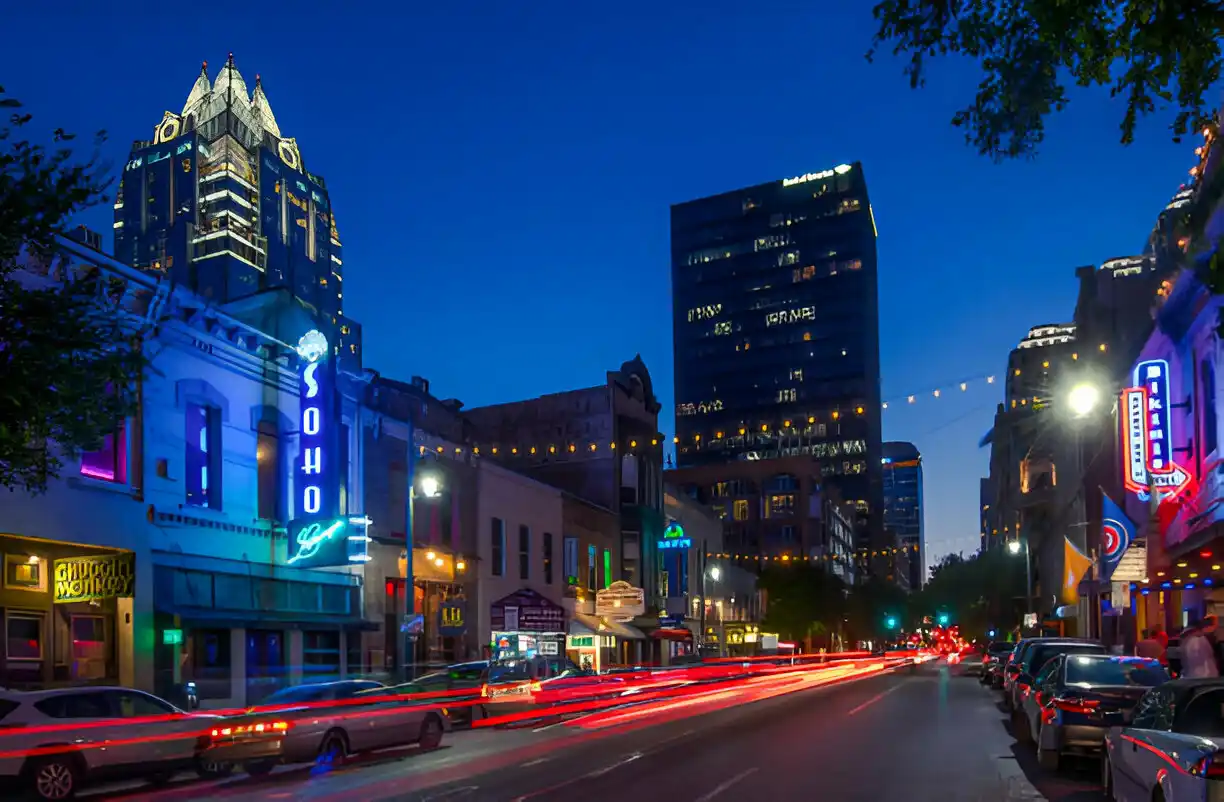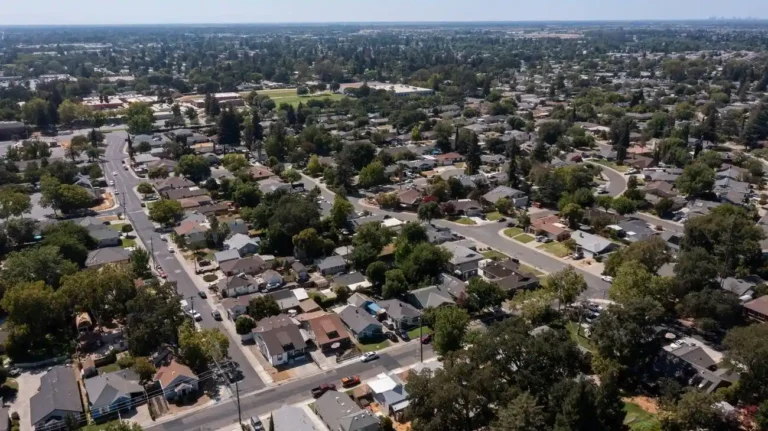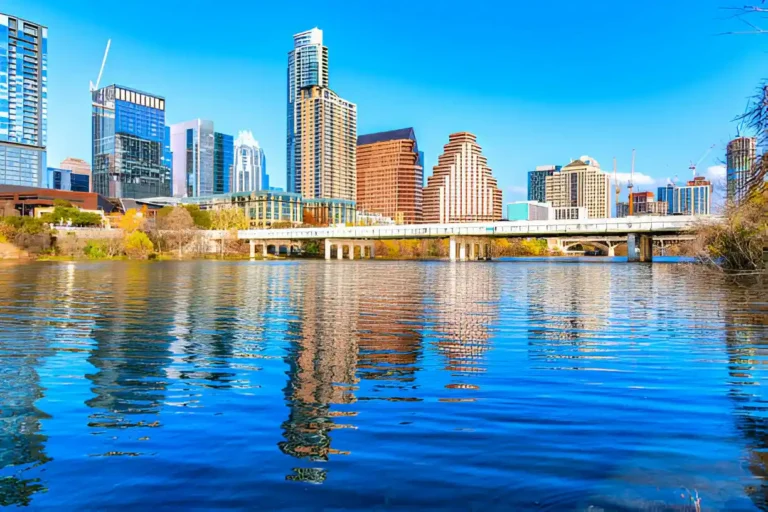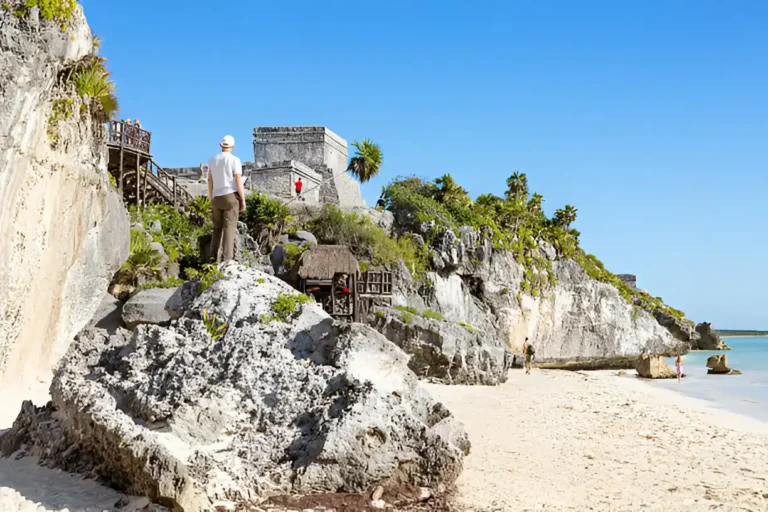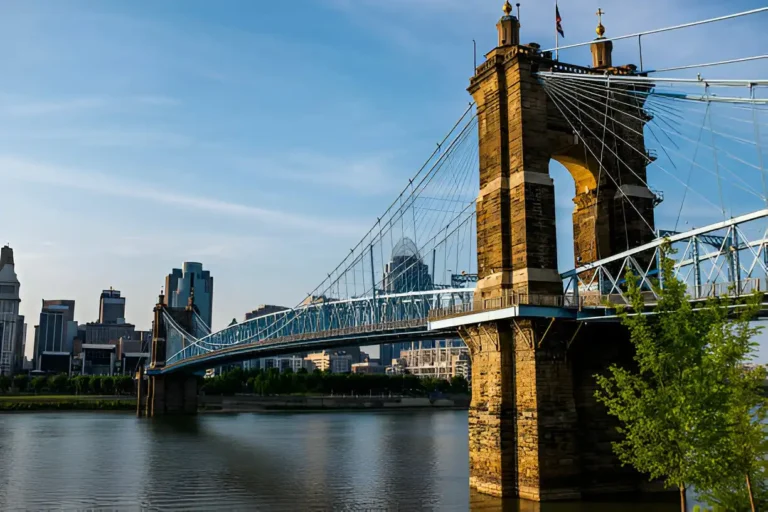San Antonio vs Austin: Which City Is Better For Living?
San Antonio vs Austin are two of the most vibrant and fastest-growing cities in Texas, attracting newcomers from across the country with their unique charms and opportunities. While they share the broader Texan culture and a location in the heart of the Lone Star State, these cities offer distinctly different vibes and lifestyles.
From the live music capital’s quirky spirit to the Alamo City’s rich Hispanic heritage, understanding the key distinctions between San Antonio and Austin is crucial when deciding where to plant your roots. Cost of living, job prospects, entertainment options, and overall quality of life can vary dramatically between these two urban oases. Whether you’re a young professional, growing family, or retiree, one city is likely to align better with your needs and aspirations than the other.
This in-depth comparison guide will explore the tale of two Texas cities through an array of vital lenses. By weighing factors like affordability, industry strengths, cultural amenities, and surrounding attractions, you’ll gain valuable insights to determine which locale is the superior match for your desired lifestyle. With both Austin and San Antonio rapidly evolving, now is the ideal time to get acquainted with their unique personalities before taking the plunge.
History and Origins
San Antonio
San Antonio’s origins trace back to 1718 when the Spanish established a military and religious outpost known as the Mission San Antonio de Valero, later called the Alamo. Over the next few decades, several other Spanish missions were built along the San Antonio River, forming the basis of the city. These missions aimed to convert local Native American populations to Christianity and establish a Spanish presence there. San Antonio’s Spanish colonial heritage is evident in its architecture, cuisine, and cultural traditions.
Austin
In contrast, Austin was founded much later in 1839 as the capital of the Republic of Texas. Originally named Waterloo, the city was chosen to replace Houston as the seat of government due to its central location and proximity to the Colorado River. The city was renamed Austin after Stephen F. Austin, known as the “Father of Texas.” From its inception, Austin embraced a spirit of independence and served as the political and cultural heart of the young republic. This pioneering attitude contributed to Austin’s quirky, artistic character that still persists today.
Demographics
Population size and growth trends
San Antonio and Austin have distinct demographic profiles that reflect their unique histories and economic drivers. San Antonio, with a population of around 1.5 million, is one of the fastest-growing major cities in the United States. Its population is relatively young, with a median age of 33.8 years, and is predominantly Hispanic/Latino (64.2%). Many residents work in industries like healthcare, military, and tourism.
In contrast, Austin’s population in 2024 is 2,274,000, a 2.06% increase from 2023. The capital city has a median age of 33.6 years and a more diverse racial/ethnic mix, with a sizeable population of Whites (48.9%), Hispanics (33.8%), and Asians (7.9%). Austin is a major tech hub, with many residents employed in industries like technology, education, and government.
Age, careers, and other stats to profile typical resident
Both cities attract newcomers from across the country and world, drawn by job opportunities and lifestyles. San Antonio’s growth is fueled by its affordable cost of living, while Austin’s explosive expansion is driven by its booming technology sector and reputation as a cultural hotspot. As these Texas cities continue their ascent, their demographics will further evolve to reflect new economic realities and population influxes.
Job Market and Economic Outlook
San Antonio and Austin offer vastly different job markets and economic landscapes. The military, healthcare, and tourism industries heavily drive San Antonio’s economy. Major employers include Joint Base San Antonio, USAA, H-E-B, Valero Energy, and Methodist Healthcare System. The city’s central location, low costs, and bilingual workforce have attracted operations centers for companies like Amazon, Navistar, and Volkswagen.
In contrast, Austin is a major tech hub dubbed “Silicon Hills.” It’s home to giants like Dell, Apple, IBM, Samsung, and hundreds of startups. Other key industries include pharmaceuticals, renewable energy, and gaming. The University of Texas is a major employer and economic driver. Austin’s unemployment rate is lower than San Antonio’s, and future job growth projections are very strong in tech, business services, and leisure/hospitality sectors.
While San Antonio provides more opportunities in stable, traditional industries, Austin has emerged as a magnet for high-growth tech companies and entrepreneurship. Both cities boast relatively low costs of doing business compared to other major metros. Austin’s rapid expansion has led to rising housing costs, straining affordability for many workers. San Antonio’s more diversified economy may provide more career options across different fields.
Cost of Living
Regarding the cost of living, San Antonio holds a significant advantage over Austin. Housing costs, in particular, are much more affordable in San Antonio, with median home prices around $300,000 compared to over $600,000 in Austin. Rental rates also skew lower, with average one-bedroom apartments renting for around $1,100 in San Antonio versus $1,600 in Austin.
Beyond housing, other everyday expenses like groceries, utilities, and transportation tend to be more affordable in San Antonio. The overall cost of living index in San Antonio is around 15% below the national average, while Austin sits about 10% above the average.
Utility costs like electricity, water, and internet are generally lower in San Antonio due to cheaper utility rates and milder summer temperatures that require less energy for cooling. Groceries and household goods also cost less on average.
For transportation, both cities require a vehicle for most residents, but insurance rates, fuel prices, and parking fees are typically lower in San Antonio. The city also has a less congested road network compared to Austin’s notoriously traffic-clogged highways.
While Austin residents enjoy higher average incomes, those higher wages are often negated by the significantly higher costs of housing and living expenses. For those on a tight budget or looking to stretch their income further, San Antonio provides much more affordable options across virtually all spending categories.
Arts, Culture and Entertainment
Both San Antonio and Austin offer vibrant arts, cultural, and entertainment scenes that cater to diverse interests. The cities have distinct flavors that reflect their unique histories and personalities.
San Antonio’s Cultural Tapestry
San Antonio’s cultural landscape is deeply rooted in its Spanish colonial heritage and the influence of Mexican-American traditions. The city boasts an array of world-class museums, such as the San Antonio Museum of Art, which houses an impressive collection of ancient Greek, Roman, and Egyptian artifacts, as well as contemporary works by Mexican and Latino artists.
The UNESCO World Heritage site of the San Antonio Missions National Historical Park is a must-visit attraction, showcasing beautifully preserved Spanish frontier missions dating back to the 18th century. The River Walk, a 15-mile-long network of walkways along the San Antonio River, is a popular destination for dining, shopping, and entertainment, with mariachi bands and Mexican folk dancers adding to the festive atmosphere.
San Antonio’s culinary scene is a delightful fusion of Tex-Mex, Mexican, and contemporary American cuisines. From family-owned taquerias serving authentic Mexican street food to upscale restaurants offering innovative takes on classic dishes, the city’s dining options are sure to delight every palate.
Austin’s Eclectic and Quirky Vibe
Austin, often referred to as the “Live Music Capital of the World,” is a haven for music lovers. The city’s vibrant music scene spans genres from country and blues to rock and indie, with countless live music venues, festivals, and events throughout the year. The annual South by Southwest (SXSW) festival, a celebration of film, music, and interactive media, attracts thousands of visitors from around the globe.
Austin’s arts and cultural offerings are as diverse as its music scene. The Blanton Museum of Art at the University of Texas at Austin boasts an impressive collection of modern and contemporary art, while the LBJ Presidential Library and Museum offers a fascinating glimpse into the life and legacy of President Lyndon B. Johnson.
The city’s dining scene is a reflection of its eclectic and quirky vibe, with a wide range of food trucks, farm-to-table restaurants, and innovative eateries catering to every taste. From classic Texas barbecue joints to trendy vegan cafes, Austin’s culinary landscape is a melting pot of flavors and influences.
Both San Antonio and Austin offer a wealth of cultural experiences, from historic landmarks and world-class museums to vibrant music and arts scenes. Whether you’re drawn to the rich cultural tapestry of San Antonio or the eclectic and quirky vibe of Austin, these cities promise to delight and inspire with their diverse offerings.
Things to do/ Outdoor Recreation
San Antonio and Austin offer a wealth of outdoor recreational opportunities, catering to diverse interests and lifestyles. While both cities boast an abundance of parks and green spaces, their unique landscapes and surroundings provide distinct experiences.
San Antonio’s central location within the Texas Hill Country provides easy access to a variety of natural attractions. The city itself is home to numerous parks, including the iconic Brackenridge Park, which features hiking trails, picnic areas, and the Japanese Tea Garden. The nearby Guadalupe River State Park offers opportunities for kayaking, tubing, and fishing, while the Government Canyon State Natural Area is a haven for hikers and bird watchers.
Austin, on the other hand, is renowned for its vibrant outdoor scene. The city’s crown jewel is the Lady Bird Lake Hike and Bike Trail, a 10-mile loop that winds through the heart of the city, offering stunning views of the skyline and the Colorado River. Austin is also a mecca for rock climbers, with popular destinations like the Greenbelt and the Reimers Ranch Park. Additionally, the city is surrounded by several lakes, including Lake Travis and Lake Austin, which provide ample opportunities for water sports and recreation.
Beyond the city limits, both San Antonio and Austin offer access to some of Texas’ most breathtaking natural wonders. San Antonio is a short drive from the iconic Hill Country, with its rolling hills, vineyards, and charming small towns. Austin, meanwhile, is situated just a few hours from the stunning Big Bend National Park and the lush Guadalupe Mountains National Park.
For sports enthusiasts, both cities offer a variety of leagues and facilities. San Antonio is home to numerous golf courses, including the renowned TPC San Antonio, while Austin boasts a thriving cycling community and hosts several major sporting events, such as the Austin Marathon and the X Games.
Ultimately, whether you prefer hiking, water sports, or simply enjoying the great outdoors, both San Antonio and Austin offer ample opportunities to embrace an active and adventurous lifestyle.
Beyond the City Limits
Both San Antonio and Austin offer easy access to some of Texas’s most beautiful and interesting areas just outside the city limits. Nature lovers and outdoor enthusiasts will find plenty to explore in the surrounding regions.
San Antonio Area
Just a short drive from downtown San Antonio, the Texas Hill Country beckons with its rolling hills, wildflowers, wineries, and charming small towns. Fredericksburg, about an hour away, is a popular destination known for its German heritage, historic buildings, and excellent dining and shopping. Further west, the area around Uvalde offers scenic vistas, rivers, and parks ideal for hiking, camping, and kayaking.
Corpus Christi and the Gulf Coast beaches are also within reach from San Antonio, about a two-hour drive away. This gives residents easy access to beach vacations, fishing, and all the quintessential coastal Texas experiences.
Austin Area
While Austin itself has an abundance of parks and green spaces, even more outdoor adventures await just outside the city. The Texas Hill Country surrounds Austin as well, with places like Wimberley offering picturesque small towns and opportunities for hiking, swimming, and exploring.
Just an hour’s drive west of Austin is the breathtaking Hill Country wine region around Fredericksburg, with over 50 wineries, vineyards, and tasting rooms. Lake Travis is another highlight, providing a huge recreational lake for boating, fishing, swimming, and more right in Austin’s backyard.
Both cities make it easy for residents to enjoy weekend getaways or day trips to experience the natural beauty, outdoor activities, and slower pace of life in the surrounding Hill Country and rural areas of Central Texas.
Quality of Life
San Antonio and Austin both offer an excellent quality of life, but there are some distinct differences between the two cities.
Schools
When it comes to education, Austin has the edge with higher-ranked public schools and the presence of the University of Texas flagship campus. San Antonio’s schools are decent but lag behind Austin’s. San Antonio has more affordable higher education options with quality universities like UTSA, Trinity, and several private colleges.
Safety
Crime rates in both cities are relatively low compared to other major metro areas. Austin tends to have slightly lower violent and property crime rates overall. San Antonio has done an impressive job driving down crime in recent decades through community policing initiatives.
Weather considerations
The weather is a major factor – Austin has a subtropical climate with hot summers and mild winters, while San Antonio gets brutally hot in the summer but has milder year-round temperatures. Both deal with potential flooding from strong thunderstorms in spring.
Diversity and inclusion
Austin promotes itself as an open and inclusive city, with a strong LGBTQ community, ethnic diversity, and progressive values. San Antonio is more conservative overall but still quite diverse, especially on the west side with its Hispanic/Latino population.
In terms of livability, Austin gets high marks for its outdoor lifestyle, arts/music scene, and trendiness but also has challenges with traffic congestion and cost of living. San Antonio offers a lower cost of living, family-friendly amenities, rich cultural heritage, and the perks of a big city with a small-town feel in many neighborhoods.
Growth and Development
Both San Antonio and Austin have experienced rapid population growth and urban expansion in recent decades, driven by strong economies, job opportunities, and their attractive lifestyles. However, the nature of their growth has differed.
San Antonio’s growth has been more steady and dispersed, with the city’s footprint gradually spreading outward as new subdivisions and master-planned communities emerge on the fringes. The city annexed surrounding areas to accommodate this suburban sprawl. Major growth corridors include the northern suburbs along I-35 and I-10, as well as out west toward the Hill Country.
In contrast, Austin’s growth has been more explosive and concentrated. The city itself has densified rapidly with new high-rise residential and commercial towers reshaping the skyline. At the same time, Austin’s suburbs have mushroomed, particularly to the north, south, and west. Cities like Round Rock, Cedar Park, and Kyle have boomed into major population centers themselves.
Looking ahead, both cities are expected to continue their torrid growth trajectories. San Antonio is projected to hit the 3 million population mark within a couple decades, cementing its place as one of the nation’s largest cities. Austin, meanwhile, could potentially double in size to around 2 million residents by 2040 based on some estimates.
This unrelenting expansion will create significant challenges related to transportation infrastructure, housing costs, environmental impact, and more.It also generates immense economic opportunities for skilled workers in fields like construction, real estate, urban planning, and civil engineering. The growth management strategies employed by each city’s leaders will be critical in determining their long-term sustainability and livability.
Which City is Right for You?
When it comes to deciding between San Antonio and Austin as your new home, the choice ultimately depends on your personal priorities and desired lifestyle. Both cities offer unique advantages and cater to different preferences.
If affordability and a lower cost of living are top priorities, San Antonio may be the more appealing option. With its relatively lower housing costs, utility expenses, and overall living expenses, San Antonio can provide a more budget-friendly lifestyle, especially for families or those on a tighter budget.
On the other hand, if you value a vibrant, eclectic atmosphere with a thriving arts and cultural scene, Austin might be the better fit. Known for its quirky vibe, live music venues, and artistic communities, Austin offers a lively and diverse environment that caters to those seeking an energetic and creative lifestyle.
For career-driven individuals or those in specific industries, it’s essential to consider the job market and economic opportunities in each city. Austin’s booming tech industry and entrepreneurial ecosystem may be more appealing for those in technology, startups, or related fields. San Antonio, with its strong military and healthcare sectors, could be a better choice for professionals in those industries.
Outdoor enthusiasts and nature lovers may find Austin’s proximity to the Hill Country and numerous parks and hiking trails more appealing, while San Antonio’s River Walk and nearby beaches could be more attractive for those who enjoy urban outdoor spaces and coastal activities.
Ultimately, the decision between San Antonio and Austin should be based on your personal preferences, career goals, and the lifestyle you envision for yourself and your family. Carefully weigh the factors that matter most to you, from cost of living and job opportunities to cultural offerings and outdoor recreation, and choose the city that aligns best with your priorities and aspirations.
FAQs
Should I live downtown or in the suburbs?
Both San Antonio and Austin offer vibrant downtown areas as well as more affordable and family-friendly suburban neighborhoods. Living downtown provides easy access to restaurants, nightlife, and cultural attractions, but can be more expensive and crowded. The suburbs tend to have more space, better schools, and lower costs of living, but require more driving and can feel isolated from the city’s pulse.
What are the transportation options?
While both cities are car-dependent, Austin has a more robust public transportation system with buses, commuter rail, and plans for light rail expansion. San Antonio’s public transit is more limited. Austin is also very bike-friendly, with dedicated cycling lanes and trails. Both cities experience traffic congestion during peak hours.
Which city has better weather?
San Antonio and Austin have very similar climates, with hot summers and mild winters. San Antonio gets slightly more precipitation each year. Austin’s summers can be especially scorching, with temperatures over 100°F common in July and August. San Antonio’s proximity to the Gulf of Mexico provides a bit more humidity and cloud cover.
How diverse are the cities?
San Antonio is one of the most ethnically diverse cities in the U.S., with a Hispanic/Latino majority and strong African American and Asian communities. Austin is more of a blend of white, Hispanic, and Asian residents. Both cities celebrate their multicultural heritage through food, music, and festivals.
What are the dating/social scenes like?
Austin is well-known for its vibrant music and social scene, with a large population of young professionals, college students, and creatives. San Antonio has a more laid-back vibe but still offers many bars, clubs, and opportunities to meet new people. The LGBTQ+ communities are very active in both cities.
